Abstract
Early passages of the NIH 3T3 mouse cell line undergo spontaneous neoplastic transformation leading to the development of transformed foci if grown to confluence in 2% (vol/vol) calf serum (CS) and left there for more than a week. Transfer of the postconfluent cultures results in the appearance of large numbers of transformed foci; many of them are larger and denser than those in the original culture. If the cells are continually kept at low population densities by frequent passages in 10% CS, they lose the capacity to undergo spontaneous transformation. If however the low-density passages are made in 2% CS or in 10% (vol/vol) fetal bovine serum, both of which support lower growth rates and saturation densities than does 10% CS, they gain the capacities to grow to high saturation densities and produce more foci when grown to confluence in 2% CS. These increases are proportional to the population densities used in the frequent passages, although the densities are all kept well below confluence. We conclude that the combined constraints of submaximal serum plus those of the limited cell contacts of the low cell densities used here elicit an adaptive response that endows the entire population with increased growth capacity. The increased growth capacity of the heterogeneous population in turn increases the capacity of a fraction of the population to initiate distinctive transformed foci. Similar studies have indicated that the capacity of cells to produce tumors and metastases in mice and rats is enhanced by prior maintenance at high density in culture. We propose the concept of progressive state selection to account for the general increase in the growth capacity of cells that is elicited by moderate constraints on their growth and metabolism.
Full text
PDF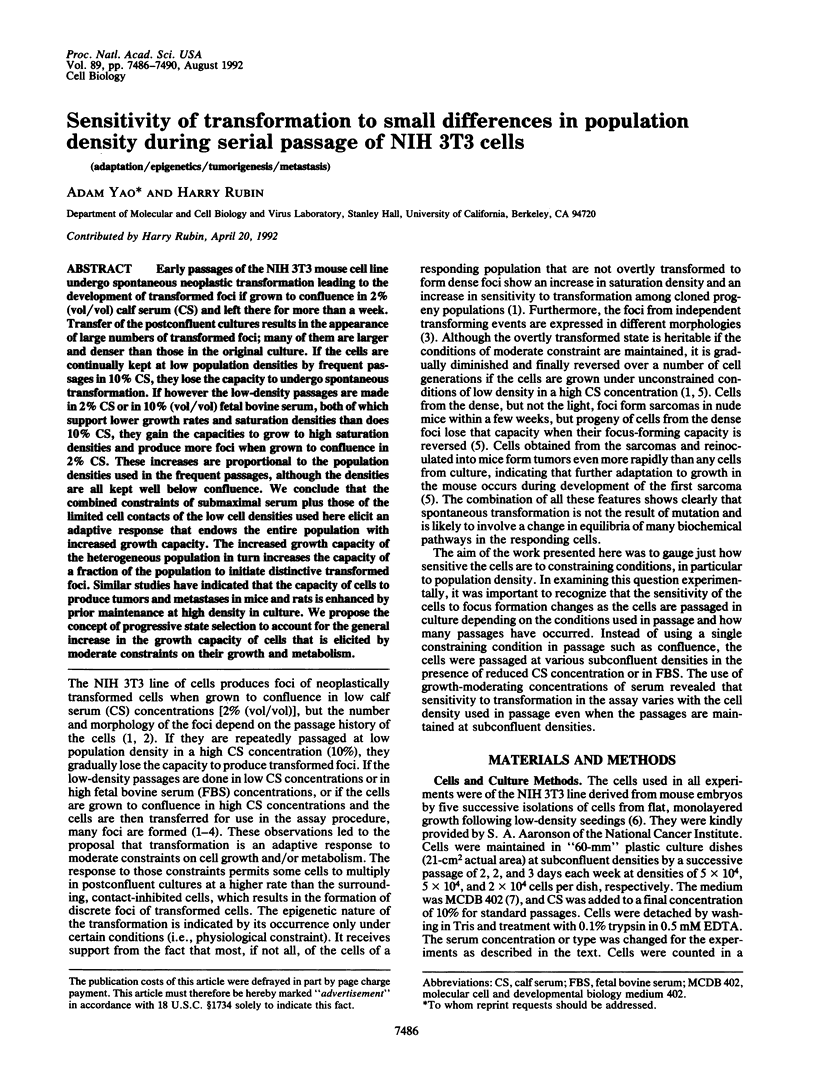
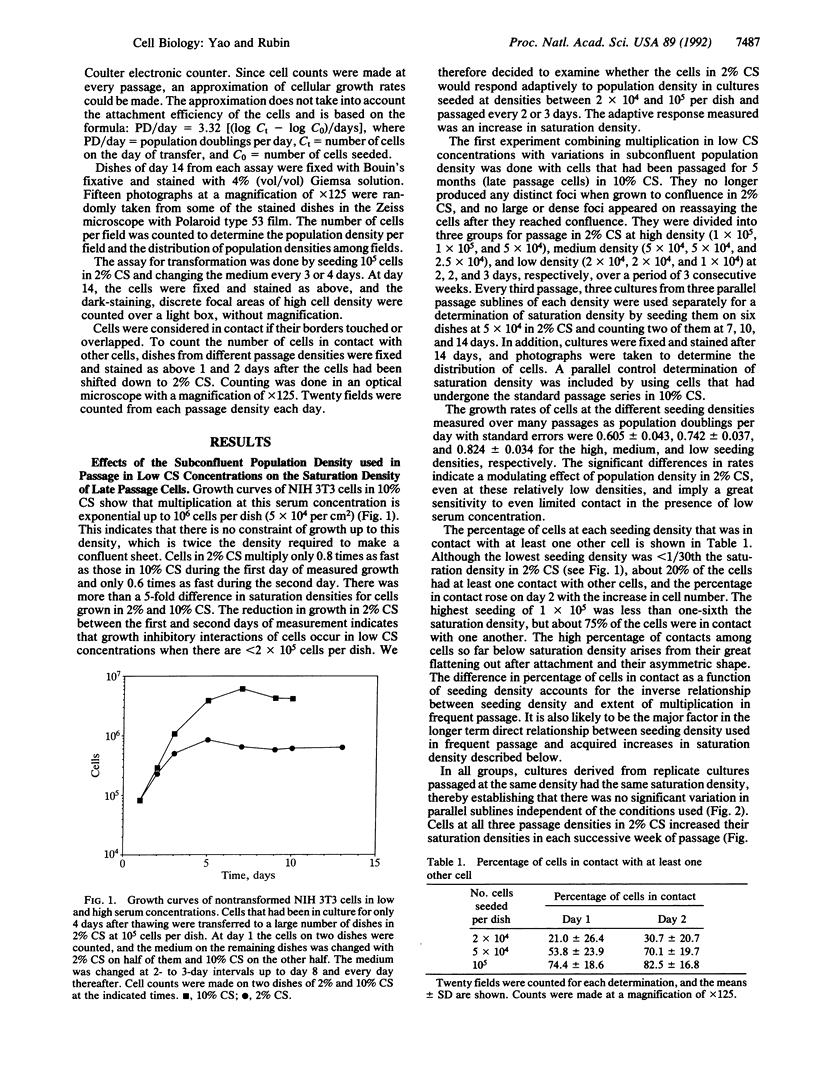
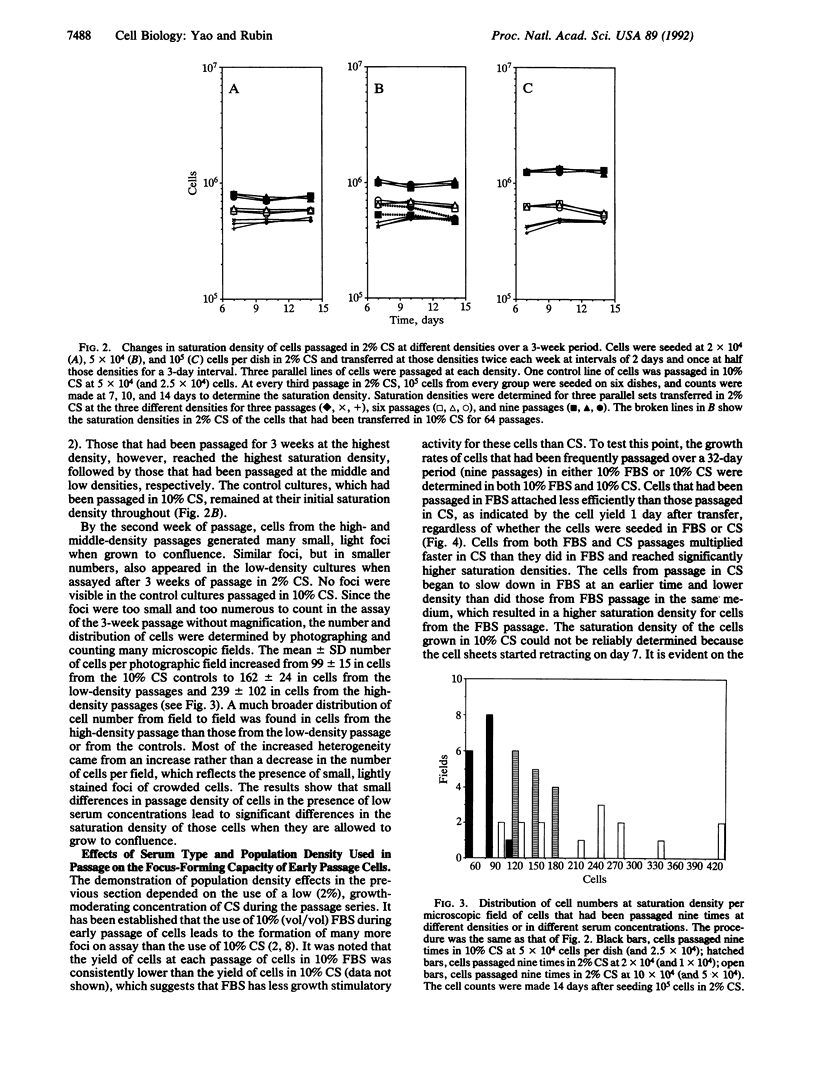
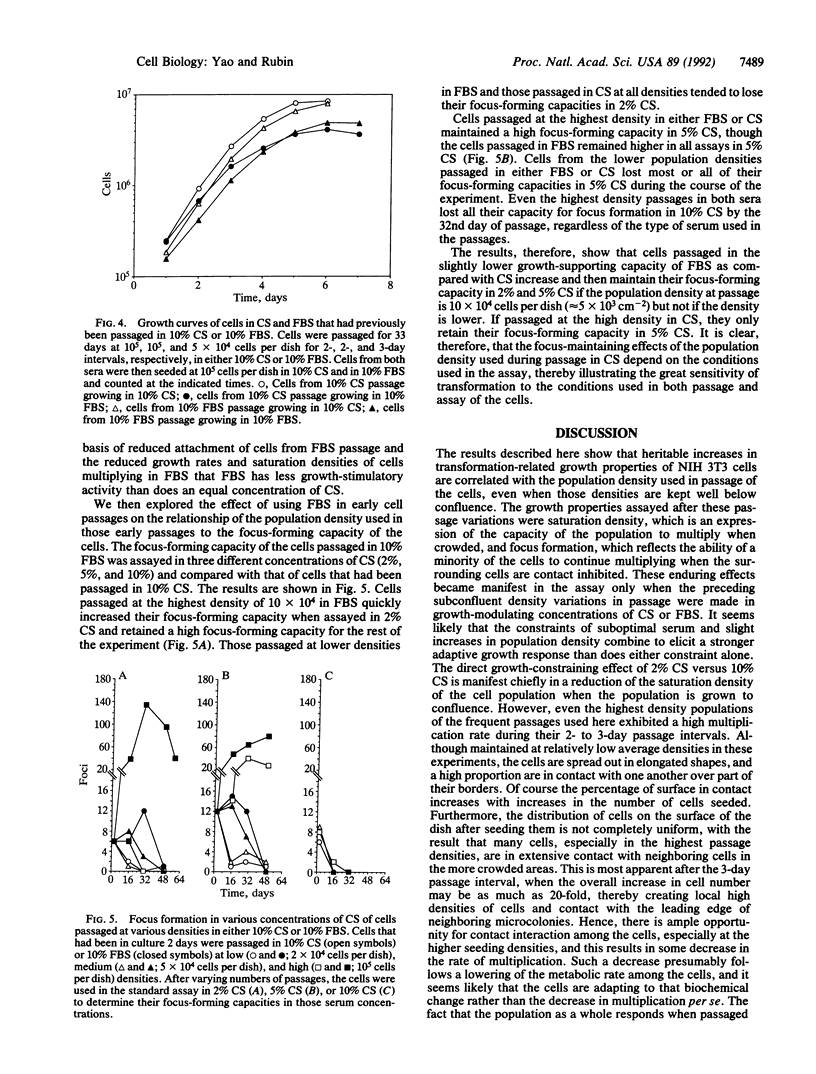
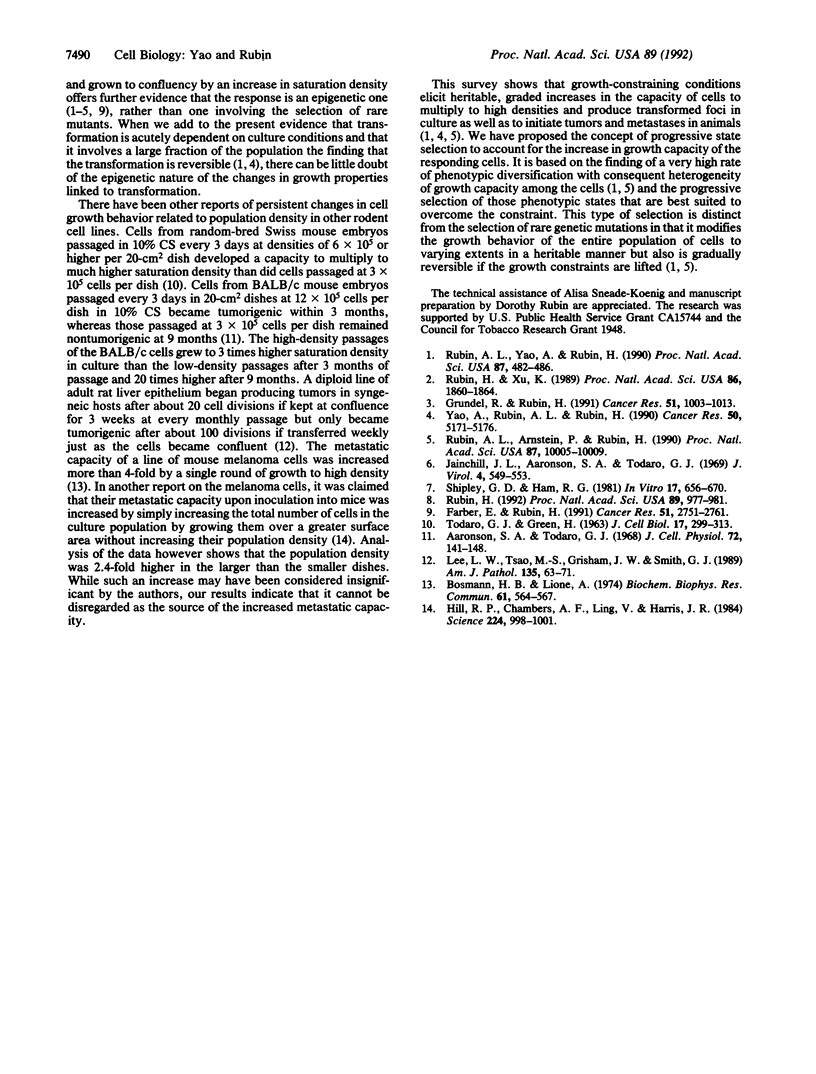
Selected References
These references are in PubMed. This may not be the complete list of references from this article.
- Aaronson S. A., Todaro G. J. Development of 3T3-like lines from Balb-c mouse embryo cultures: transformation susceptibility to SV40. J Cell Physiol. 1968 Oct;72(2):141–148. doi: 10.1002/jcp.1040720208. [DOI] [PubMed] [Google Scholar]
- Bosmann H. B., Lione A. Capacity for tumor cell implantation as a function of in vitro cell density. Biochem Biophys Res Commun. 1974 Nov 27;61(2):564–567. doi: 10.1016/0006-291x(74)90994-2. [DOI] [PubMed] [Google Scholar]
- Farber E., Rubin H. Cellular adaptation in the origin and development of cancer. Cancer Res. 1991 Jun 1;51(11):2751–2761. [PubMed] [Google Scholar]
- Grundel R., Rubin H. Effect of interclonal heterogeneity on the progressive, confluence-mediated acquisition of the focus-forming phenotype in NIH-3T3 populations. Cancer Res. 1991 Feb 1;51(3):1003–1013. [PubMed] [Google Scholar]
- Hill R. P., Chambers A. F., Ling V., Harris J. F. Dynamic heterogeneity: rapid generation of metastatic variants in mouse B16 melanoma cells. Science. 1984 Jun 1;224(4652):998–1001. doi: 10.1126/science.6719130. [DOI] [PubMed] [Google Scholar]
- Jainchill J. L., Aaronson S. A., Todaro G. J. Murine sarcoma and leukemia viruses: assay using clonal lines of contact-inhibited mouse cells. J Virol. 1969 Nov;4(5):549–553. doi: 10.1128/jvi.4.5.549-553.1969. [DOI] [PMC free article] [PubMed] [Google Scholar]
- Lee L. W., Tsao M. S., Grisham J. W., Smith G. J. Emergence of neoplastic transformants spontaneously or after exposure to N-methyl-N'-nitro-N-nitrosoguanidine in populations of rat liver epithelial cells cultured under selective and nonselective conditions. Am J Pathol. 1989 Jul;135(1):63–71. [PMC free article] [PubMed] [Google Scholar]
- Rubin A. L., Arnstein P., Rubin H. Physiological induction and reversal of focus formation and tumorigenicity in NIH 3T3 cells. Proc Natl Acad Sci U S A. 1990 Dec;87(24):10005–10009. doi: 10.1073/pnas.87.24.10005. [DOI] [PMC free article] [PubMed] [Google Scholar]
- Rubin A. L., Yao A., Rubin H. Relation of spontaneous transformation in cell culture to adaptive growth and clonal heterogeneity. Proc Natl Acad Sci U S A. 1990 Jan;87(1):482–486. doi: 10.1073/pnas.87.1.482. [DOI] [PMC free article] [PubMed] [Google Scholar]
- Rubin H. Adaptive evolution of degrees and kinds of neoplastic transformation in cell culture. Proc Natl Acad Sci U S A. 1992 Feb 1;89(3):977–981. doi: 10.1073/pnas.89.3.977. [DOI] [PMC free article] [PubMed] [Google Scholar]
- Rubin H., Xu K. Evidence for the progressive and adaptive nature of spontaneous transformation in the NIH 3T3 cell line. Proc Natl Acad Sci U S A. 1989 Mar;86(6):1860–1864. doi: 10.1073/pnas.86.6.1860. [DOI] [PMC free article] [PubMed] [Google Scholar]
- Shipley G. D., Ham R. G. Improved medium and culture conditions for clonal growth with minimal serum protein and for enhanced serum-free survival of Swiss 3T3 cells. In Vitro. 1981 Aug;17(8):656–670. doi: 10.1007/BF02628401. [DOI] [PubMed] [Google Scholar]
- TODARO G. J., GREEN H. Quantitative studies of the growth of mouse embryo cells in culture and their development into established lines. J Cell Biol. 1963 May;17:299–313. doi: 10.1083/jcb.17.2.299. [DOI] [PMC free article] [PubMed] [Google Scholar]
- Yao A., Rubin A. L., Rubin H. Progressive state selection of cells in low serum promotes high density growth and neoplastic transformation in NIH 3T3 cells. Cancer Res. 1990 Aug 15;50(16):5171–5176. [PubMed] [Google Scholar]


